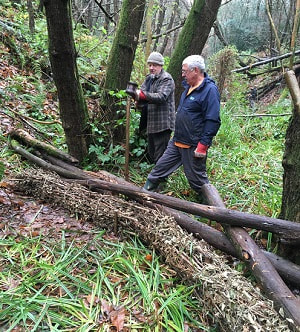 On Thursday 6th December 18 enthusiastic volunteers gathered in Fore Wood to start work on Natural Flood Management (NFM) as part of the Sussex Flow Initiative (SFI) project in the Powdermill Catchment. This semi‐natural ancient, 52-acre woodland has a SSSI designation and falls within the Area of Outstanding Natural Beauty of the High Weald. The site is situated on the edge of Crowhurst village, 1.5 miles south of Battle and is owned and managed by RSPB. The Powdermill catchment is naturally steep and fast flowing. Localized flooding to properties in Crowhurst has occurred regularly in recent years. During times of high rainfall, too much water flows down the river too quickly, and creates flood surges which cause risks to people and property. SFI is working in this catchment to slow down this flow of water. Fore Wood’s steep ghyll woodland streams and sandstone ravines, where rare ferns and bryophytes grow, offer a great opportunity to create natural leaky dams that slow the flow of water to hold it back in times of high flood. This also helps improve the local hydrology to create a wetter woodland, and mimics the natural process of wood falling into the ghyll. By creating these woody features, we aim to slow the flow of water through the ghylls, diverting flood flow paths into minor washland flood plains. This increases the humidity and enhances the unique ghyll flora of the streams and biodiversity of the woodland. We are very grateful to SFI and RSPB staff, interns and volunteers who worked throughout the day to construct over 20 woody debris features in the steep ghyll streams, and we will visit again on the 7th February 2019 to install another 25 natural leaky dam features. The dams are made to look as natural as possible and include using techniques such as whole tree head felling, gulley stuffing and ditch top diverters. These impermanent woody features are designed to be active only in times of heavy rain or peak flow, but we hope they will significantly help to reducing flood peaks in Crowhurst village. If you would like to get involved as a volunteer for the SFI or have any questions about our work in this catchment please email Rina Quinlan, Project Officer, Powdermill Catchment sussexflowinitiativepm@gmail.com.
1 Comment
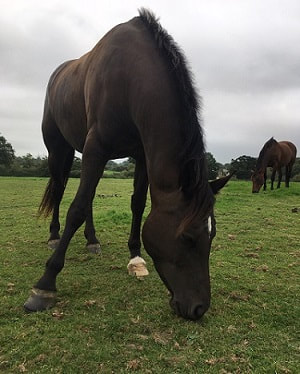 Horses are continuous grazers, which can lead to horse pasture often being overgrazed. Horses are continuous grazers, which can lead to horse pasture often being overgrazed. Natural Flood Management (NFM) works with nature to help hold back water and slow the flow of river catchments throughout the UK. This can help to reduce downstream flooding, increase biodiversity and prevent drought at a relatively low cost. This approach is rising in popularity among NGO’s, governmental organisations and landowners throughout the UK as a method in dealing with localised flooding, whilst improving wildlife habitats and providing multiple other benefits to society. The majority of NFM work is focused on building partnerships where rural landowners help to mitigate against flood run off from rural and urban areas, including their own land. There are many different land uses that can contribute to localised flooding, but some, such as horse grazing are rarely considered in terms of what they can contribute to reducing flooding. With an estimated 944 000 horses kept in the UK (BETA, 2018), the British countryside is dotted with equestrian facilities both large and small. Horses are continuous grazers and need a constant supply of forage throughout the year. This can lead to horse pasture often being overgrazed and threadbare and can ultimately lead to muddy gates, soil erosion and nutrient run off via drains and surface run off channelling towards the nearest river tributary. Good pasture management can help horses stay fit and healthy and can reduce their parasite burdens, and usually means rotating paddocks to limit the use of flood prone fields during times of heavy rain. Systems such as the Equicentral System encourage horse owners to become “grass farmers” promoting a more biodiverse grass and herb mix which has multiple benefits for horses and wildlife. Horses benefit from a more nutritious diet whilst higher level vegetation and wildflowers will encourage a greater number of invertebrates, which in turn attracts birds and bats that also help keep down numbers of problem horse flies. In addition, deeper plant roots absorb more water and nutrients into the soil which helps to prevent run off and erosion. Planting trees and hedgerows on equestrian land can also create multiple benefits for the horse by helping to absorb water to prevent muddy paddocks, creating shade and supplying natural forage and nutrients missing from their regular diet. When available horses will actively nibble on bark, berries and leaves from hedgerows, reflecting their role as both browsers and grazers in a natural ecosystem. Our Natural Flood Management project, Sussex Flow Initiative (SFI), carries out a huge range of Natural Flood Management work across Sussex each year. Recently, we facilitated the planting of hedgerows, shaws and woodland comprising over 12,050 trees across a 39 hectare site at the Sussex Horse Rescue Trust (SHRT) near Uckfield with a further 8,000 additional trees planned. This project was designed to create shade and shelter for the rescued horses, as well providing extra forage and enhancing local pollinator and ecological networks. SFI have also worked with other landowners to create woody debris features in water channels which help slow the flow upstream to reduce areas prone to flooding. Managing your land to help prevent downstream flooding, can ultimately also help enhance your paddocks for equestrian use. For more information and free advice on how to make your horse pasture more water friendly please do not hesitate to contact us. References British Equestrian Trade Association (BETA) (2018) Market information, National Equestrian Survey 2015 [Online]. Available at www.beta-uk.org/pages/industry-information/market-information.php (Accessed 13 December 2018). . Since 2012, the Sussex Flow Initiative (SFI) project has been using Natural Flood Management (NFM) to help local communities to reduce flooding. What most people don’t realise is that our work to store and slow down flood water in the landscape also helps to improve water quality. Did you know that one of the most widespread forms of freshwater pollution is particles of sand, silt and clay, known as ‘fine sediment’? Although it’s a natural and important component of freshwater ecosystems, human activities (e.g. agriculture, forestry, urban areas and wastewater treatment plants) often lead to elevated levels of fine sediment in surface waters, impacting the physical, chemical and biological characteristics of these ecosystems. Elevated fine sediment levels can have direct detrimental effects on aquatic organisms, by burying or dislodging them; by clogging gills or feeding appendages; and indirectly by introducing contaminants attached to the fine sediment particles (either adsorbed to the surface of particles or absorbed in them). It can also limit light penetration, reduce oxygen concentrations in water and substrate, and more. The type of contaminants attached to fine sediment varies depending on the activities upstream, but in catchments which are primarily agricultural, the most abundant contaminants are likely to be nutrients (i.e. nitrogen and phosphorous compounds). In water, these nutrients can lead to eutrophication and oxygen depletion, and can even be directly toxic to aquatic organisms. However, on land and in wetlands these nutrients can be locked up in soils, or more rapidly transformed and removed/utilised by plants and microbes. These are all good reasons for reducing soil erosion and fine sediment delivery by embracing more sustainable land management practices. Soils are some of our most precious natural resources, sometimes taking hundreds of years to form, and yet we have lost unprecedented levels of them in recent decades. In addition to tackling the sources of the problem, we also need to look at restoring the natural processes that would normally be helping to regulate and remove sediment once it’s in our watercourses. This is where Natural Flood Management can help, and why it’s considered a more holistic approach compared to more engineered flood risk management. NFM includes a range of techniques that work with natural processes to slow and temporarily store water in the landscape. This is good news for water quality, because by slowing water velocity, the ability of sediment to remain suspended in water is reduced, leading to it becoming deposited along with any contaminants that are attached to the sediment. For centuries human civilisations have exploited river floodplains and wetlands for agricultural production due to the naturally nutrient rich soils, which are the result of sediment and nutrient deposition from flood waters. These floodplains and wetlands are vital for healthy rivers and streams, as they can act as vast stores for large proportions of a watercourses sediment and nutrient load, as well as carbon sinks. However, many wetlands have been drained, flood embankments built to reduce localised flooding, or levees accumulated over time from dredging spoil, resulting in many rivers being cut off from their floodplains, and the movement of water through the catchment being sped up. By carrying out NFM we can lower embankments and levees and partially block drainage ditches, with the aim of reconnecting rivers to their floodplains and restoring wetlands. In doing so, not only do we open up large areas for flood water storage, we allow the important water purification processes to occur. Woodlands can also be important areas for water purification, but these too have often been ditched to rapidly transport water from the land, reduce the height of the water table and maximise accessibility. This combined with historic watercourse management practices which included clearing woody material from streams and ditches, reduces the ability of woodlands and its spongy, organic and microbe rich soils to store and breakdown pollutants in water. The good news is that NFM can again help to restore these processes, by using woody debris dams that slow the flow, and encourage water out of stream/ditch channels during flood events.
Many watercourses have been significantly modified (e.g. channelised) to the point where instream habitat and sediment deposition are relatively uniform. More natural streams have a sequence of erosional and depositional areas, providing greater habitat diversity. By reintroducing woody material to these streams we can encourage greater hydraulic diversity and the return of these natural processes, allowing fine sediment to be deposited and stored in some areas (rather than along the entire length), but also creating areas which are scoured of sediment and can support organisms which are less tolerant of this type of substrate. All of this means that by using NFM to reduce flooding in towns and villages, we can also be reducing the impacts of water pollution on aquatic organisms and the effort needed to clean our drinking water (saving money and energy!). Nevertheless, despite the amazing ability of the natural world to purify water, there is an upper limit to its capacity to do so, and whilst we should be working with, and attempting to restore the natural processes that regulate water purification, this doesn’t reduce societies responsibility for minimising the inputs to the environment. NFM is just one of the useful tools that can help us begin to reduce water pollution, but to protect this important resource we need to do much more!
Droughts are natural events, and there are lots of streams or sections of stream that we would expect to naturally flow intermittently due to climate, weather patterns and fluctuations in underground stores of water. Such streams are inhabited by organisms with adaptations that allow them to subsist in these habitats. For example, many aquatic invertebrates lay eggs that are covered in a gelatinous membrane, preventing the embryos from drying out, ensuring that they can survive without water during dry spells. Other aquatic animals actively seek refuge during droughts, burrowing in wet muds or sheltering in damp areas. However, not all aquatic organisms are well-adapted to cope without water, which is one reason why droughts, particularly those brought on by, or exacerbated by human activities, and in streams for which drying up is uncharacteristic, can be problematic for wildlife (not to mention us). In recent weeks you may have seen images of the Environment Agency working hard to rescue fish left without enough water to survive. In the UK, our native fish have few adaptations to these conditions, other than the ability to move and seek pools for refuge. In other more arid countries, some fish have evolved adaptations that allow them to travel over land to find suitable habitat, or burrow into mud and produce a mucus cocoon. There are lots of human activities that increase the likelihood of rivers and streams drying up or experiencing low flows. One of the most significant is our conventional approaches to land and water management. Historically, land management has considered water somewhat of a nuisance, and every effort was made to encourage water off of the land and out to sea as quickly as possible. After removing trees and hedgerows, digging ditches, installing land drains under fields, constructing river embankments, and dredging, channelising and clearing debris from our rivers, water now travels quickly downstream. In most cases, Natural Flood Management is focused on reversing these activities and restoring the ability of the land to slow and store water. In doing so, water is once again allowed to infiltrate into soils and slowly drain into surface waters, or percolate deeper into soils and replenish groundwater stores, resulting in a more steady supply of water to rivers and streams. By reintroducing woody debris to streams, not only does it help to ‘slow the flow’ but it also encourages a more diverse flow pattern (which is often lacking due to channelisation and lack of debris) and influences geomorphological processes, including the formation of scour pools. These pools can be an important refuge for aquatic organisms during droughts, and if the stream does completely dry up, woody debris is likely to benefit burrowing invertebrates by providing heavily shaded areas where sediment remains moist for a longer period of time. These benefits for wildlife were visible when we visited some of our woody debris dams earlier this week. It was easy to see the changes in streambed level, and the scour pools that have been formed since we installed the features. The stream was not flowing and had largely dried up, but there were numerous scour pools downstream of woody debris that were visibly sheltering a (crowded) community of aquatic invertebrates. It was great to see that our NFM work is bringing benefits year-round. The multiple benefits provided by NFM, are why we at the Sussex Flow Initiative are so passionate about this approach to reducing flood risk, by restoring and working with natural processes.
 Rina Quinlan, Project Officer, Powdermill Catchment Rina Quinlan, Project Officer, Powdermill Catchment In April 2018 I started my role as a Natural Flood Management project officer for the Sussex Flow Initiative (SFI) in the Powdermill Stream Catchment in East Sussex. SFI has had some fantastic results with ‘slowing the flow’ of the River Ouse catchment since 2014 and as a result, the partnership has been extended to this new river catchment. My job is to help alleviate the rising amount of localised flooding, by using natural measures such as hedgerow planting. In this role I advise on natural flood management (NFM) and work with natural processes (WWNP) to help landowners and communities make their land and homes more water resilient in times of heavy rainfall. More importantly at the moment, it also helps us to be more resilient to drought. The Powdermill stream runs between historic Battle to the north and Crowhurst village to the South. It sits within the High Weald Area of Outstanding Natural Beauty (HW AONB) and its undulating hills, wild flower meadows, ancient and ghyll woodlands are familiar characteristics of this landscape. Water, however, flows rapidly down these steep valleys, causing streams to overflow and high surface water run-off from hard urban surfaces such as roads and houses. Engineering solutions have tried and failed to improve the flooding situation for this catchment and historic drainage practices and canalising of rivers, as well as increasing intensity of land use for urban development and agriculture have exacerbated the scale and severity of flooding. However, recognition for the multiple benefits NFM and WWNP can provide to local communities and wildlife is gaining more and more traction throughout the UK amongst many stakeholders. My role is relatively simple. By creating woody debris dams, tree and hedgerow planting, pond and washland creation, this helps reduce flood peaks and slow the flow of water before it reaches homes at risk. Crucially WWNP also makes our landscapes more resilient to drought by storing more water for longer on the land. If that wasn’t enough, NFM also greatly improves wildlife habitat for a multitude of species, provides shade and water for grazing animals, mimics natural processes, stores and cleans water, and much more. As a passionate conservationist and advocate for ecosystem restoration, I take great delight in explaining to others that much of my role entails mimicking the things that a beaver - one of our natural ecosystem engineers – would do!! It’s a great job, and I’m looking forward to seeing what we can achieve. Rina Quinlan can be contacted at sussexflowinitiativepm@gmail.com or 07595 452038 What’s not to love about trees? They regulate the earth’s climate, clean the air of pollutants, absorb carbon dioxide and give us oxygen to breathe, provide habitat for wildlife, regulate flood waters, and much more. At the Sussex Flow Initiative (SFI), we are interested in all of the benefits that trees provide, but we are particularly excited about their potential for reducing flood risk, as well as making our landscapes more resilient to drought. The benefits wheels below (taken from the Environment Agency’s Working with Natural Processes evidence base) help to illustrate just how many benefits woodlands can have across a whole range of important natural life support systems. The ability of trees to control flood water is the result of their importance within the hydrological cycle; intercepting rainfall, taking up water from the soil, slowing down surface run-off, and promoting water infiltration and percolation into soil and groundwater. These processes hold water on land, and reduce the amount and speed of the delivery of water to our streams and rivers. The evidence for catchment-wide woodland reducing flood flows is strong, with research able to show the negative impacts that woodland felling has at a catchment scale, on stream discharge and sediment delivery.
With this in mind, SFI have been making sure that we plant trees in the right places, wherever we can, to help reduce flooding. We have planted our fair share of trees throughout the Ouse catchment since the project started in 2012 – over 28,000 in fact. In December 2017, we embarked on our largest tree planting project to date – the planting of a further 12,050 trees (bringing our 2017/18 total to 17,900!) in the form of 2km of hedgerow and 1.3 hectares of woodland at the Sussex Horse Rescue Trust in Uckfield. The site is a fantastic location nestled between areas of ancient woodland and park land, with large fields sloping down to the floodplain of the River Uck – an ideal location for natural flood management enhancements, which will also provide important corridors for wildlife to move between the surrounding sites. With the help and support from the local community and dedicated volunteers from the surrounding areas, we are pleased to say that we planted the last of the trees this week! With over 800 hours of volunteer time (from more than 125 volunteers), we really couldn’t have done it without them, and hopefully they will find the time to revisit the site in years to come to see the transformation once the trees are established. Working with these volunteers, and the landowner who appreciates the importance of these features of the landscape has been a fantastic experience, and we are already looking forward to next seasons planting at the site (a further 1.5km of hedgerow and more woodland areas), and reconnecting with the volunteers on other projects after a well-deserved rest. Last week we posted a blog about our working washland near Plumpton. One week on and our working washland is complete. The weather has obliged us by raining heavily for a few days, filling it with water, so that we can show you exactly how it works. When you look at the site, you would never imagine that such a small, innocuous valley could make such a huge contribution to reducing flooding locally, and to biodiversity. But witnessing just one of these projects in action makes you realise just how easy it would be to capture and store millions more litres of water in our countryside, in flood storage that would benefit people and wildlife. At the final count, the additional flood water storage water that the site creates is a whopping 350,000 litres (350 tonnes) of water, and that’s BEFORE the site floods! Once it floods, the flood storage in the valley could be anything from around 350,000 litres to 1,350,000 litres of extra flood storage, depending on the height of the flood. This flood water is slowed down and spread out across the land, allowing silt and other debris to drop out of the water, making it a much less dangerous flood peak, benefitting soil fertility and reducing pollution and siltation in our rivers.
When we started this project, we thought that the majority of the water flowing into the site would be flood overflow from an adjacent stream. What has happened instead is that it has filled up rapidly from rainfall running off the surrounding grassland slopes. This is particularly interesting. In a natural meadow like this, it is widely accepted that the rough grassland will slow down rainfall enough to enable most of it to filter into the soil and away into aquifers rather than flowing over the land surface. However, the intensity of the rainfall meant that instead, there was very obviously a lot of overland surface water flooding filling up the new washland, way before any actual river flooding took place. The soil on the site is some of the best I’ve seen, so it is not soil compaction creating this flood run off, it is simply the volume of water falling onto the slope in a short space of time. So our new washland is helping to store both river and ‘land’ flooding, and in doing so is creating some really nice restored wetland habitat. Seeing so much water appear in the washland overnight was fantastic. I can’t wait to see what wildlife shows up next spring. What does Natural Flood Management look like on the ground? There are all sorts of things we can do to slow and store water in our landscapes – planting trees and hedgerows, digging ponds, putting natural wood back in streams and more. We can also restore natural washlands – but what are they? Washlands are areas of land where water can spread out, slow down and be stored temporarily, whilst it’s flooding. Some of the biggest potential for storing excess flood water when it’s raining hard is in our smaller stream floodplains. These are often where the land use is less intensive, and where there is space for water to come and go periodically without adversely affecting people and farming. Water follows the line of least resistance. If we can create those lines of least resistance in the right places, then suddenly water is flowing into all the areas we want it to, rather than into our houses. At the same time, we can provide climate regulation, water purification, pollination, wildlife habitat, better green spaces for people and much more. This week we spent a couple of days with an obliging landowner and a digger, restoring the relict course of an old chalk stream. Diverted decades ago to feed a local mill, the old stream bed only really gets wet now when it floods. The local landowner saw the potential to make the stream a more active flood relief channel, and we went to work. It’s been fantastic watching it take shape. All we needed to do was to make it easier for the flood water to find the old stream channel, and the water and natural gravity will do the rest. We’re only half way through the project, and already we have created around 100 tonnes of extra flood water storage, as well as a fantastic area of habitat for wetland wildlife.
... now we just need some rain to check that it works !! The Sussex Flow Initiative has achieved a huge amount since it began 5 years ago, working with local communities, councils and organisations to investigate the potential for natural flood management, and to naturally reduce flood risk across the County and beyond. In 2012, the Sussex Wildlife Trust, Environment Agency and the Woodland Trust began an innovative project in the River Ouse catchment in Sussex - the Sussex Flow Initiative (SFI). The project’s role was to investigate opportunities for Natural Flood Management (NFM) at the catchment scale, and to implement a range of different techniques to naturally reduce flood risk whilst providing multiple benefits to society and the environment.
In its first 5 years, we advised 150 landowners on over 5,650 hectares of land, planting nearly 28,000 trees and creating over 1,000,000 litres of new seasonal water storage by constructing flood storage ponds, pocket ponds and other Run-off Attenuation Features. Working with the Ouse & Adur Rivers Trust we helped to map nearly 5,000 ha of the catchment, and have facilitated River Habitat Surveys along 51 km of main rivers, resulting in detailed sub-catchment plans that will help target our future work. The project is not only helping to reduce flood risk for communities downstream, it is also contributing to vital wildlife networks, and is enhancing a variety of ecosystem services, such as water purification, aquifer recharge, and climate regulation. We estimate that we have helped to store at least 10,000 tonnes of CO² in 5 years. By disseminating information on NFM in the form of published guidance and handbooks, the SFI website and social media, as well as newspaper articles and features on local radio, the project has had far-reaching influence, as well as helping to support others to use an NFM approach. Over the last 5 years, SFI has developed strong partnerships and collaborations with organisations and academic institutes throughout the UK, supporting the development of computer models and NFM targeting tools, and research into the design and influence of large woody debris on flow and geomorphology. One of the (not so) secrets of success of SFI, and NFM more generally, is the willingness of local communities to take ownership of tackling flood risk, either by carrying out work on their land or volunteering their time to help. We’ve been only too happy to help support these communities to feel empowered to do something tangible to help reduce flooding in their local area. We’ve also clocked up over 150 volunteer workdays, involving a range of activities from GIS mapping to tree planting. We are very grateful for all this support - the project couldn’t have come this far without its volunteers. Through working closely with local landowners, communities, councils and organisations, the SFI project has been a huge success and continues to deliver advice and practical implementation of NFM throughout Sussex. SFI has had a busy five years (full 5-year report available here) and with national interest in NFM growing, we have even more ambitious plans for the next five years. So keep your eyes out for our 5-year vision, and for our contribution to natural flood management over the next few years, as well as a national programme of natural flood management supported through the Environment Agency’s Working with Natural Processes Project! Environment Agency publishes report on Natural Flood Management evidence baseFor a while now, local projects have been making our landscapes more flood resilient at a local level, and showing that working with natural processes really can help to reduce flooding. Until now however, there has been no national platform bringing us all together to share and embed Natural Flood Management as a national discipline. On the 31st of October at the CIWEM conference, the Environment Agency launched their much anticipated ‘Working with Natural Processes’ (WwNP) report, which brings together all our evidence and expertise into one easily accessible national resource. The WwNP documents are an invaluable resource for flood risk managers and those advocating and implementing Natural Flood Management (NFM). The reports provide an in-depth review of the existing evidence for NFM; providing summaries of the main types of NFM; key literature; the level of confidence in each NFM approach, and identifying the gaps in our knowledge. The report is accompanied by interactive maps for targeting NFM and an extensive selection (65!) of case studies throughout the country. The good news is that an analysis of vast wealth of existing research reveals that NFM can definitely help to reduce flood risk, particularly for smaller magnitude floods in small to medium sized catchments. The report also shows that NFM provides multiple additional benefits both to the environment (e.g. habitat creation, water quality improvements, climate regulation), and to society, through reduced flood risk, increased access to green space, creating a healthier environment etc. Importantly, the knowledge gaps that were identified, such as how NFM can mitigate extreme flood events or how it can provide climate change resilience, will shape future research projects, which will continue to feed into the evidence base for NFM. In fact, the Environment Agency and the Natural Environment Research Council have put together a £3.4m research call to fund projects that contribute to further understanding of NFM. One of the key areas where further evidence is needed is the use of NFM in lowland catchments, which the SFI project is helping to provide. The report offers a range of “Top tips” for utilising NFM, all of which are at the core of the work that we do at the Sussex Flow Initiative :-
We already work closely in partnership with the Environment Agency on the SFI project, but we look forward to working with them more closely to embed NFM in all Flood Risk Management projects and strategies.
The full report and accompanying resources can be accessed here |


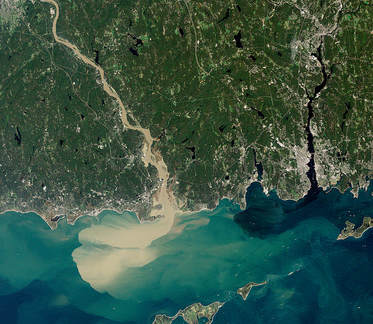



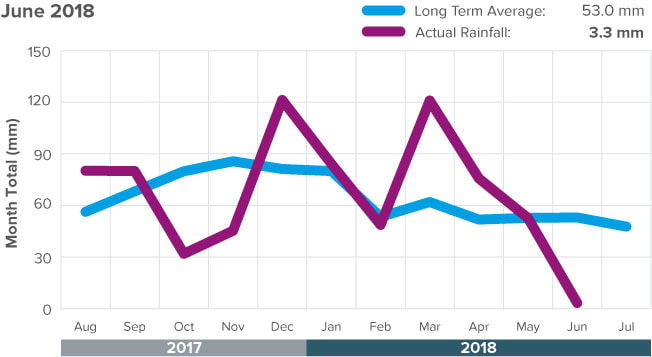
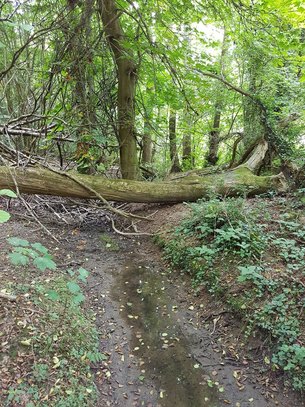
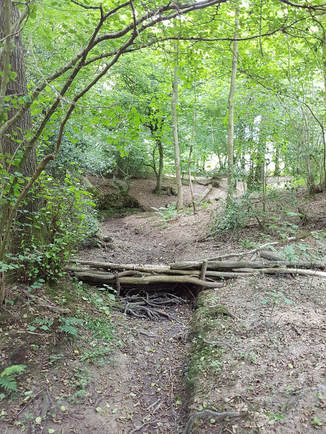
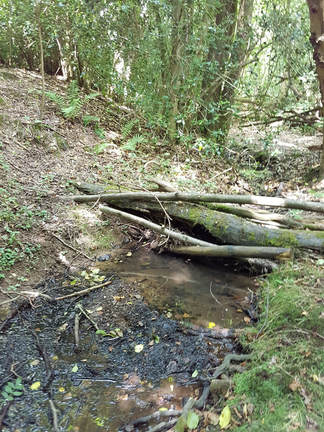
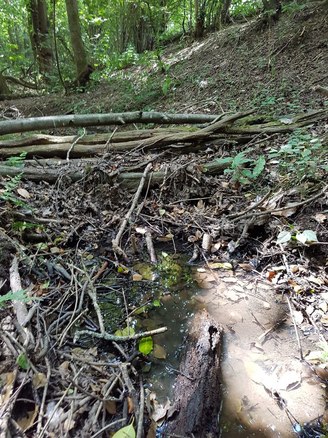
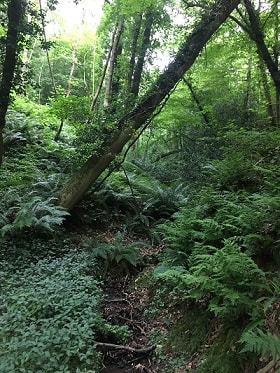
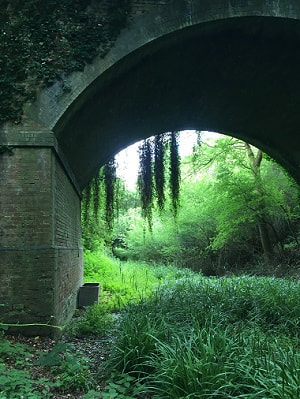
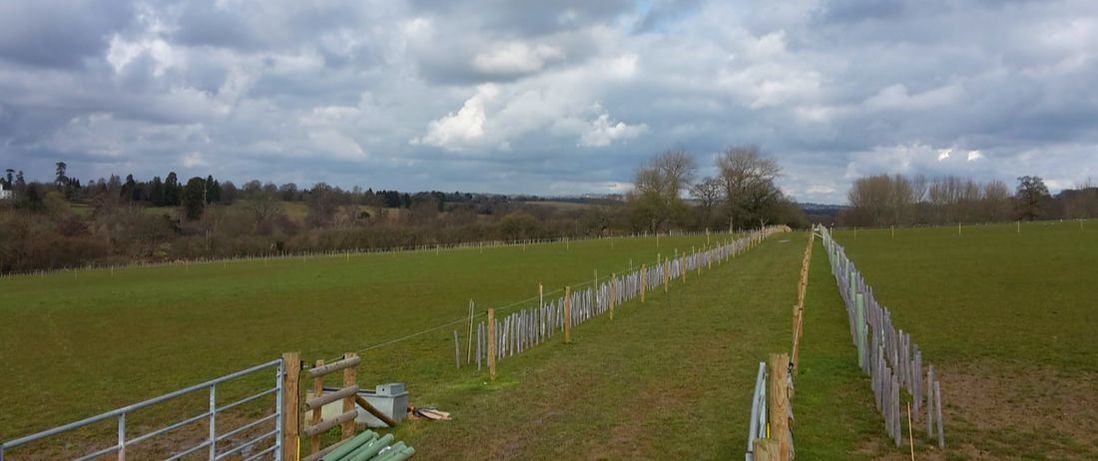
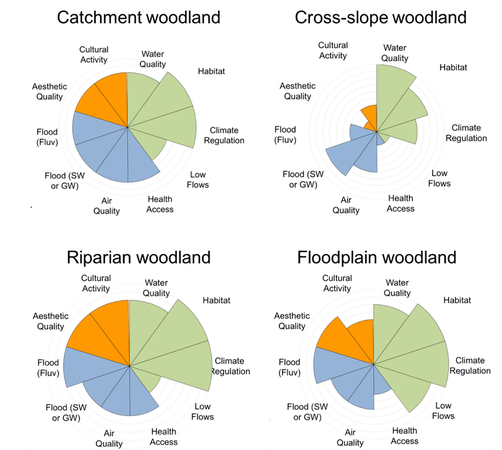
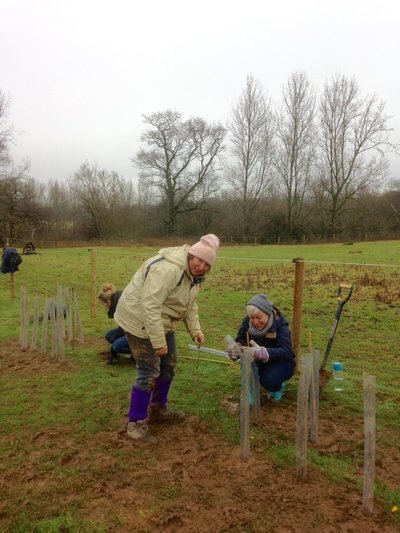
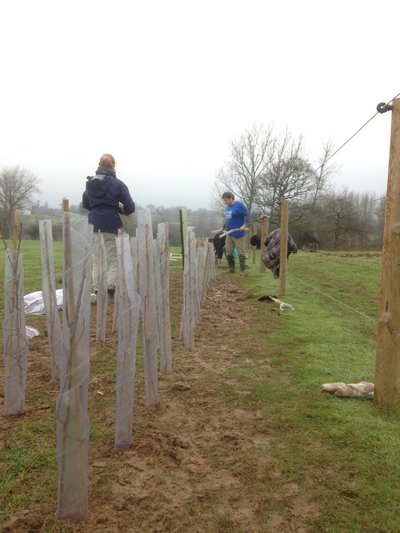
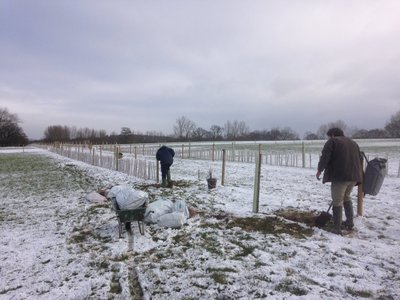
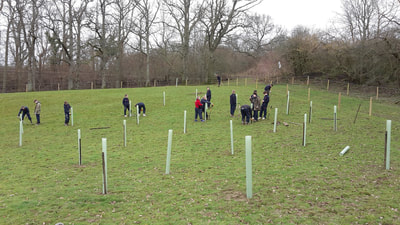
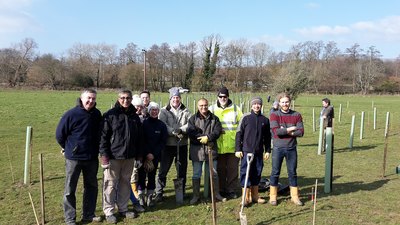
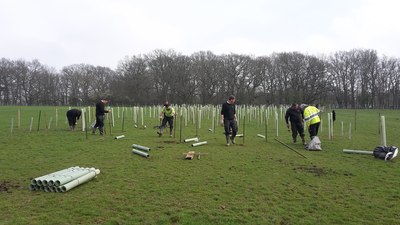
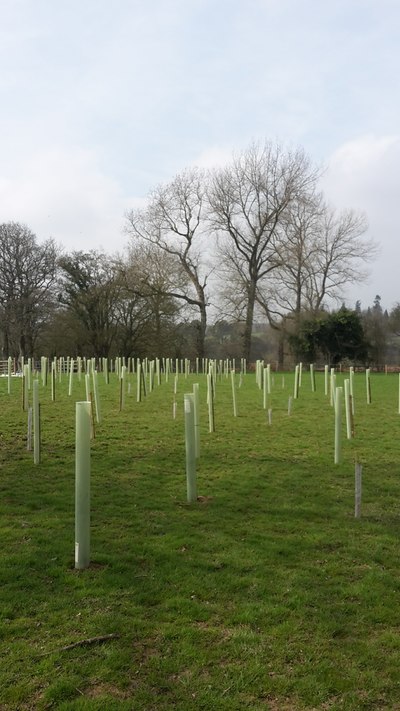
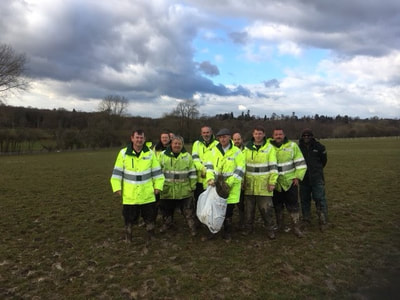
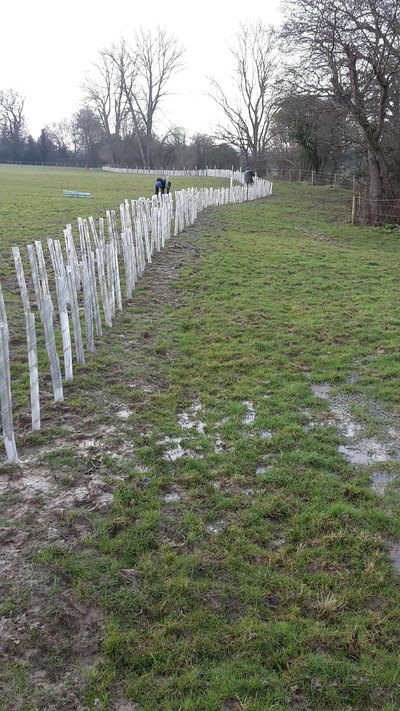
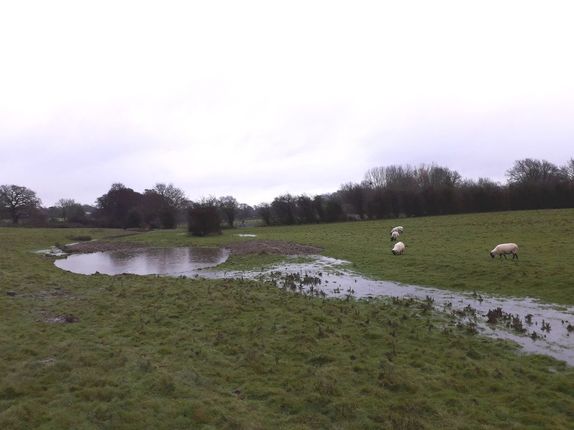

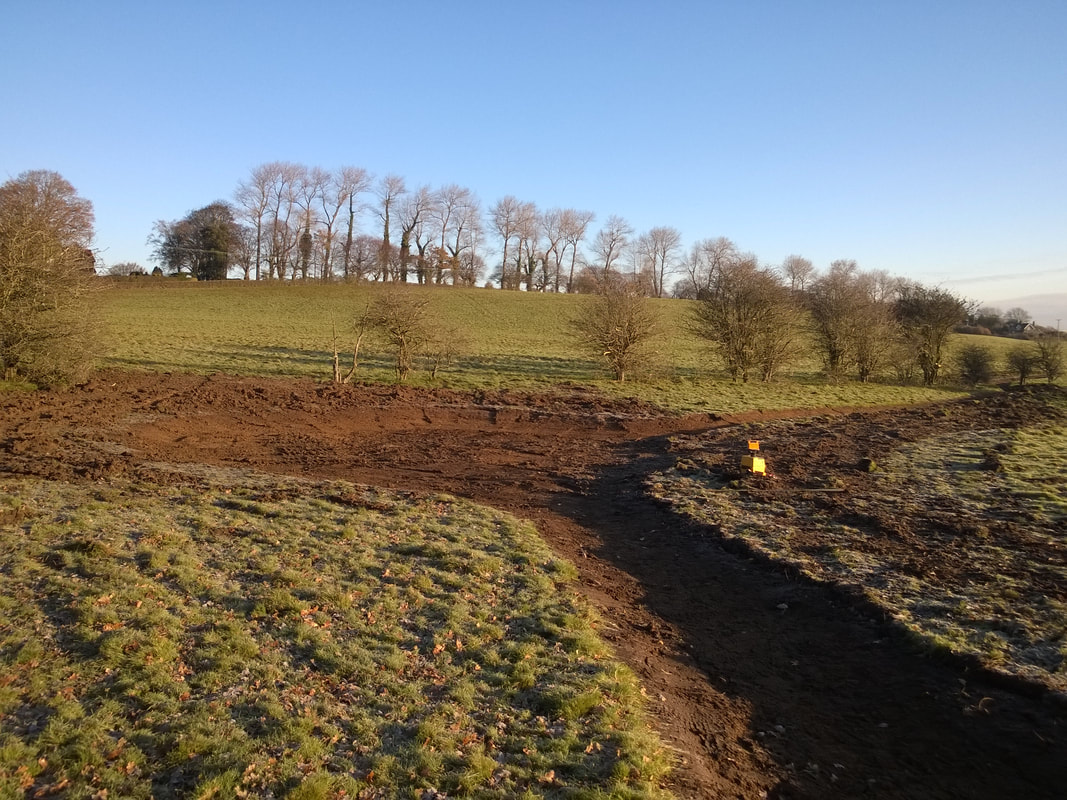
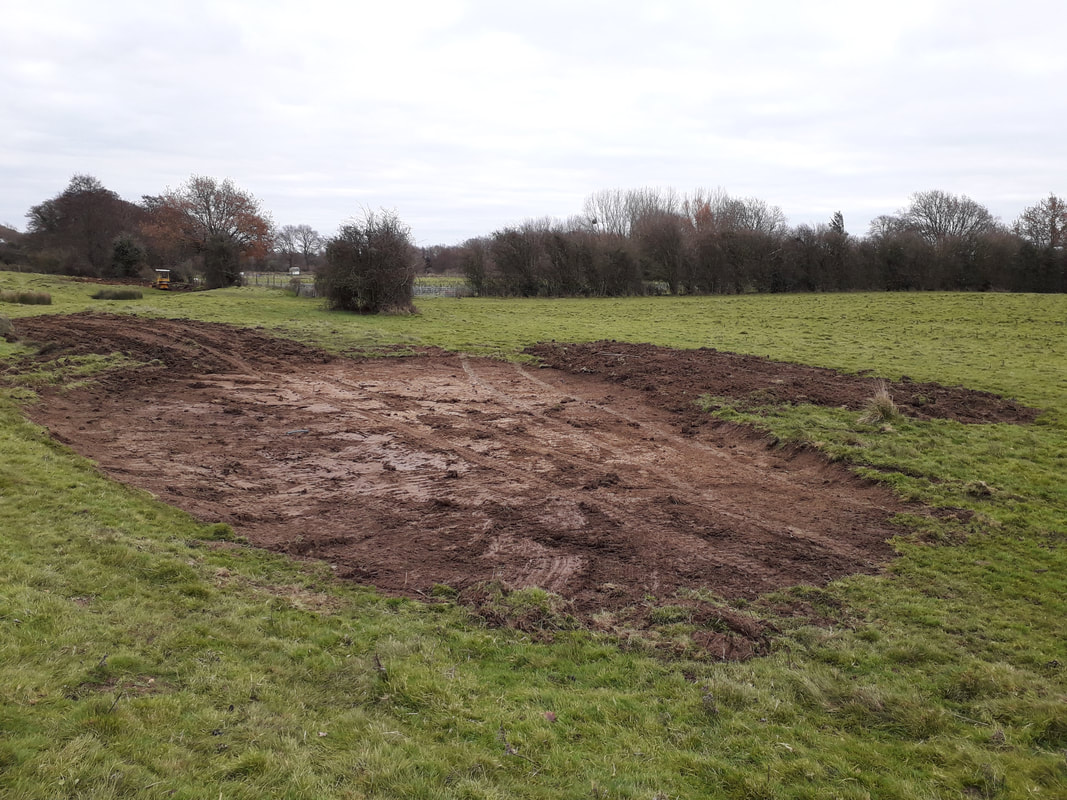
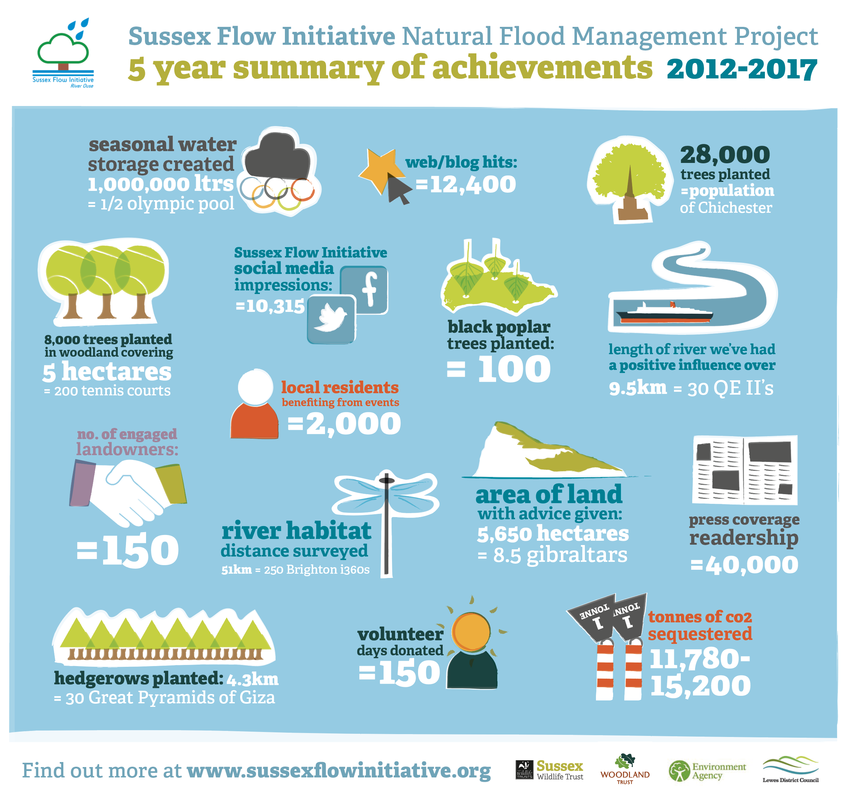
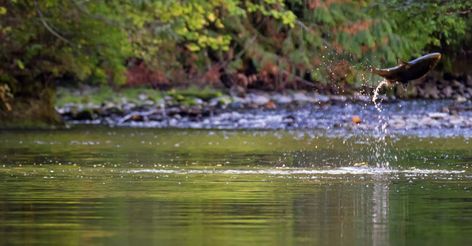
 RSS Feed
RSS Feed
